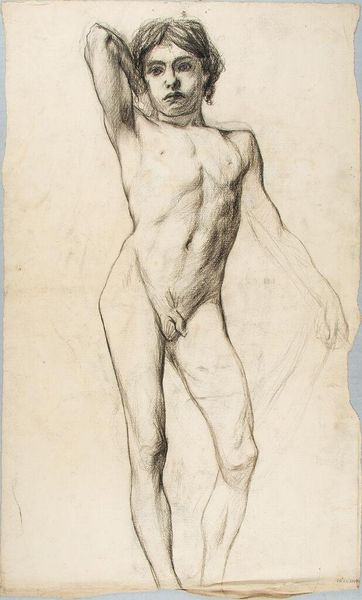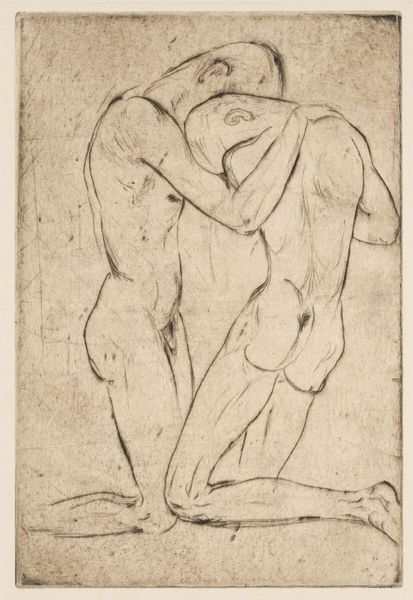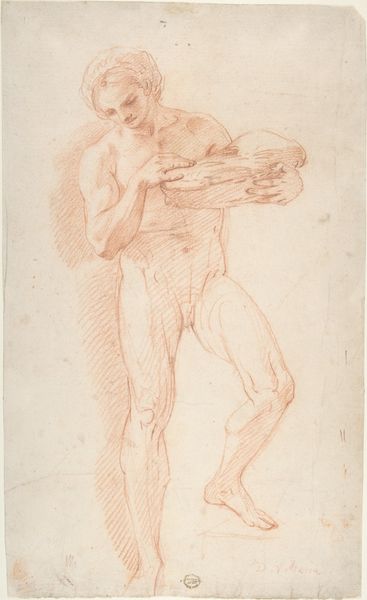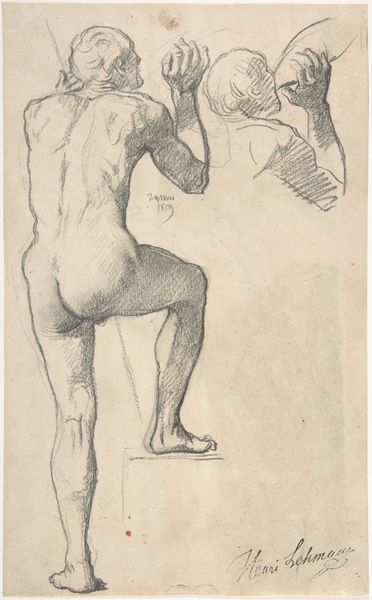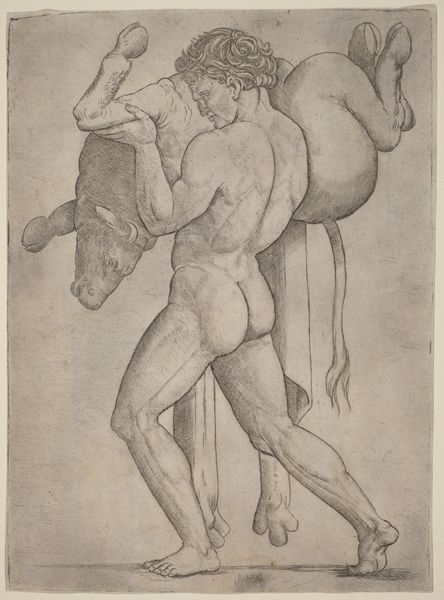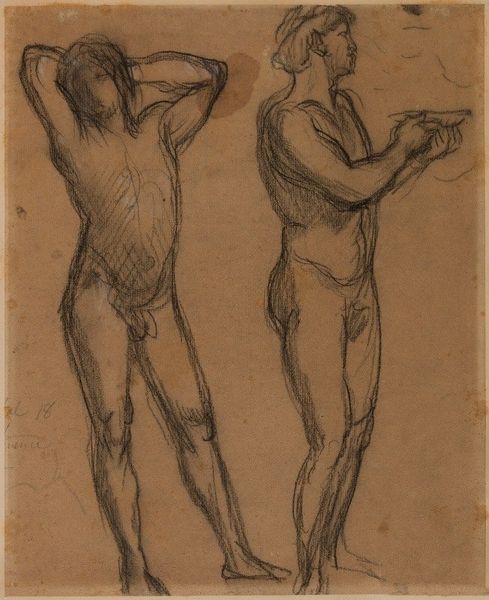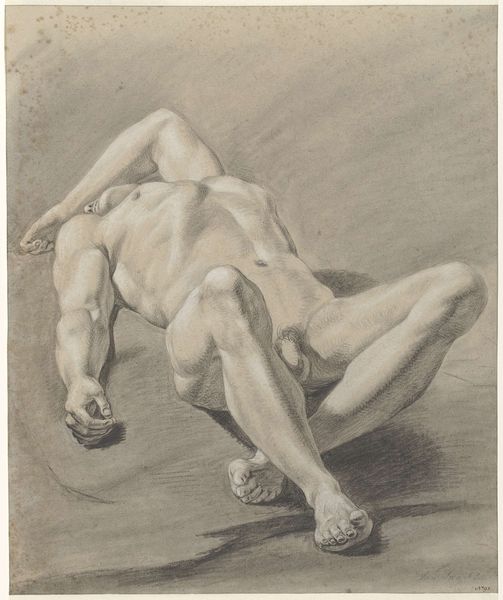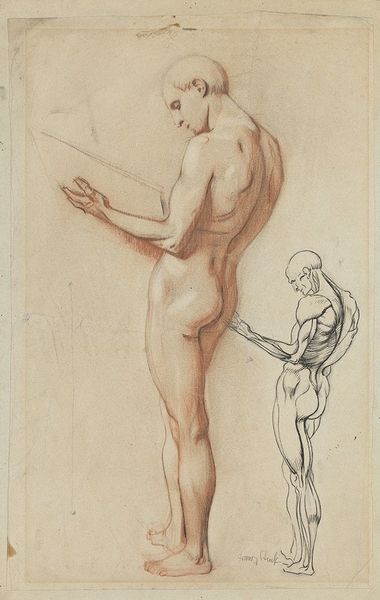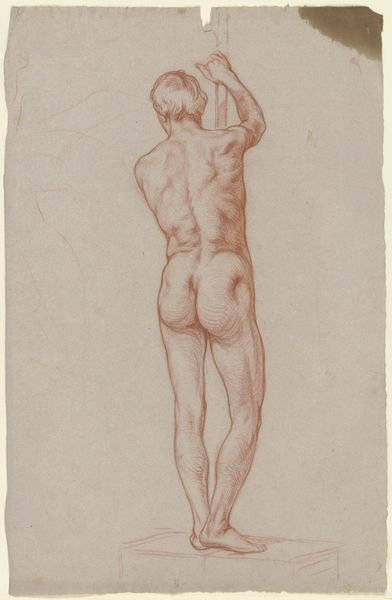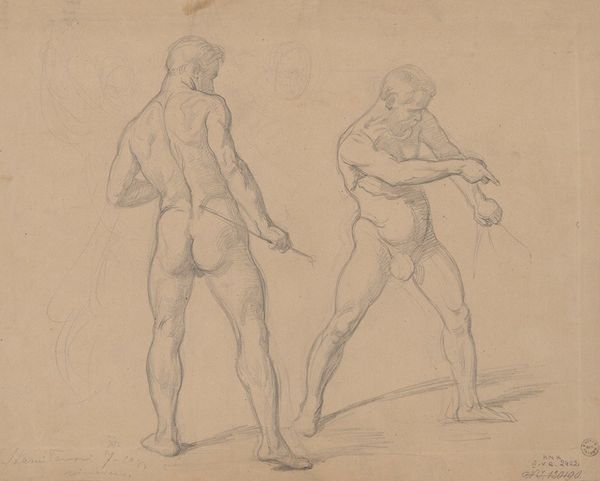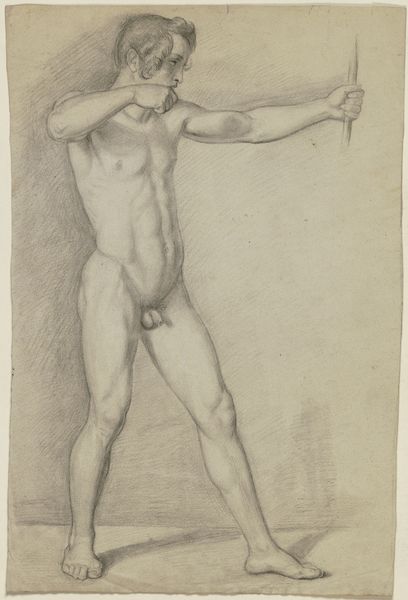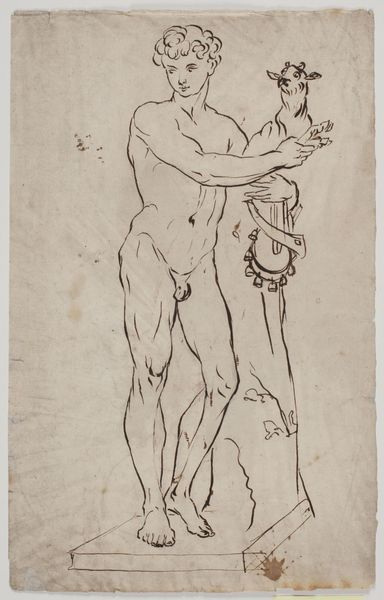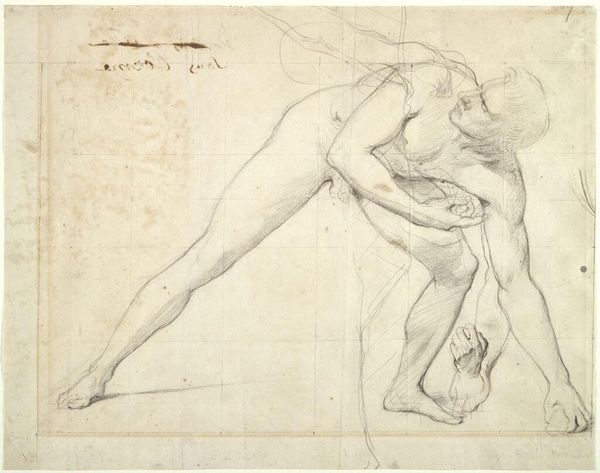
Staand mannelijk naakt, in de geheven armen een stok houdend 1789 - 1853
0:00
0:00
janwillempieneman
Rijksmuseum
drawing, charcoal
#
drawing
#
pencil sketch
#
charcoal drawing
#
pencil drawing
#
charcoal
#
academic-art
#
nude
Dimensions: height 610 mm, width 430 mm
Copyright: Rijks Museum: Open Domain
Editor: This drawing, "Staand mannelijk naakt, in de geheven armen een stok houdend" by Jan Willem Pieneman, likely created between 1789 and 1853, is quite striking. The figure seems caught between tension and repose, a powerful masculine form sketched in what looks like pencil and charcoal. What’s your take on it? Curator: Well, seeing this piece through a contemporary lens, especially concerning historical representations of the male nude, brings up several points about power, sexuality, and societal expectations. How is the artist using the male form? Is it objectified? Is it heroicized? What assumptions might the artist be making about who will be viewing this? Editor: I see your point. It definitely fits into the classical tradition, but something about the casual pose complicates a purely heroic reading, right? The stick he’s holding doesn’t quite read as a weapon. Curator: Exactly. What could the staff or "stick" be symbolizing in a social context? Perhaps labor? Or is it symbolic of control and dominion, concepts deeply rooted in power structures that existed in the 18th and 19th centuries? These works were often intended for the male gaze, particularly within academic settings. Understanding the intersection of that intended audience and societal norms of the period helps unlock possible readings. Editor: That's fascinating, framing it within those social power dynamics. So it’s not just about aesthetics, but about the underlying messages being conveyed. Curator: Precisely. Art doesn't exist in a vacuum. By situating this work within the historical and social landscape, and analyzing who held the power and whose perspectives were marginalized, we can unpack those layers of meaning. Editor: This really shifts my perspective; it's more complex than just a study of the male form. Curator: Indeed. Engaging with art this way invites us to question those historical norms and hopefully contribute to a more equitable and inclusive understanding of art history.
Comments
No comments
Be the first to comment and join the conversation on the ultimate creative platform.
